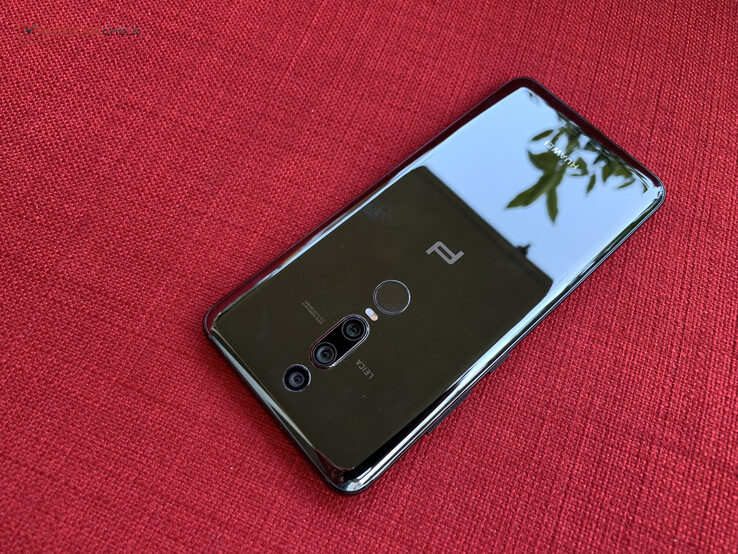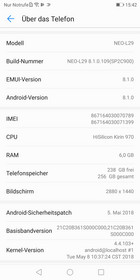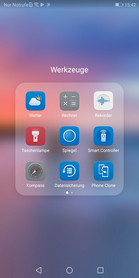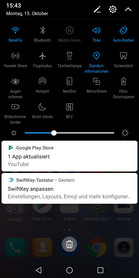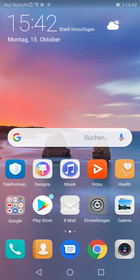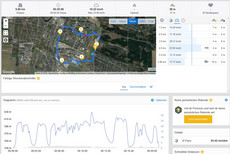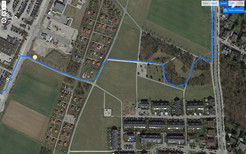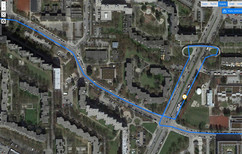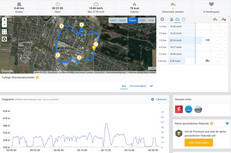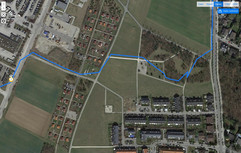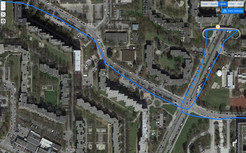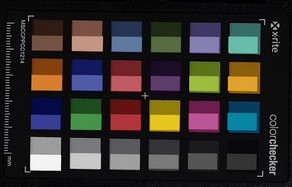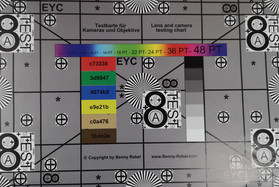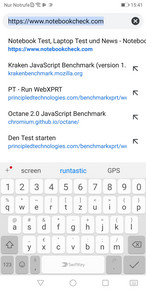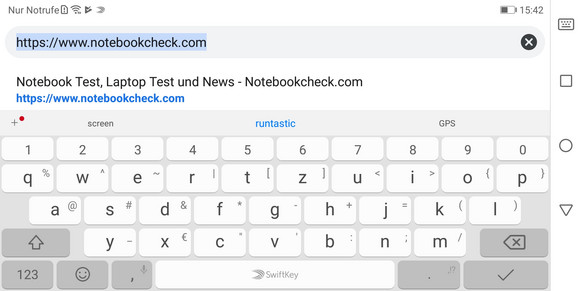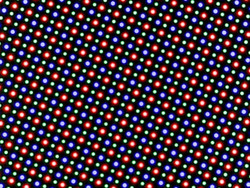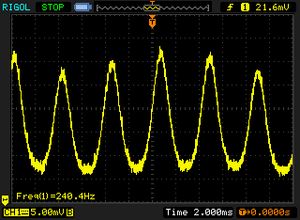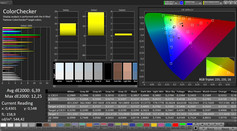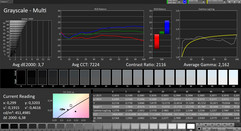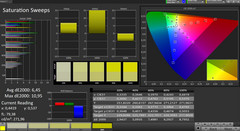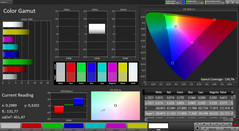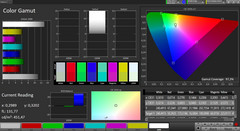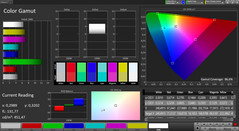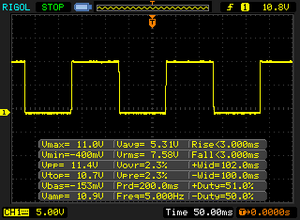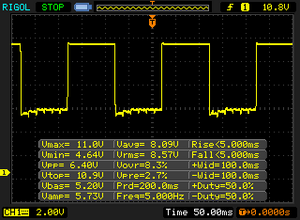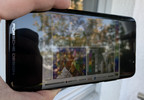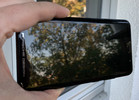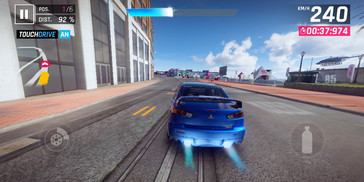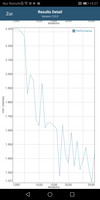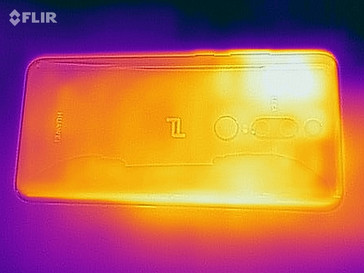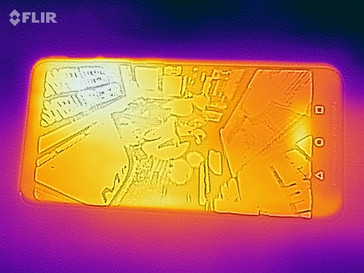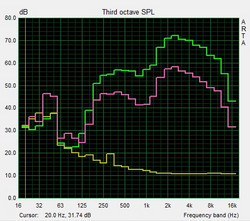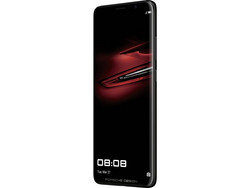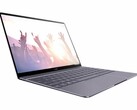Porsche Design Huawei Mate RS Smartphone Review
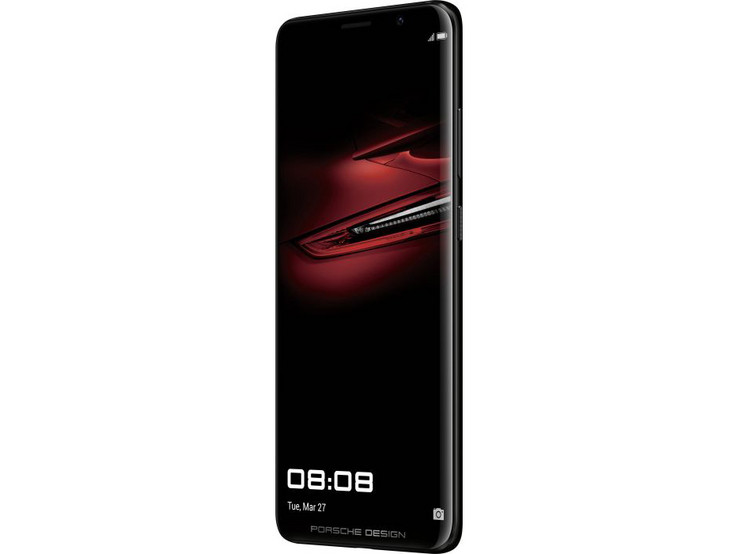
Few smartphones cost more than 1,500 Euros (~$1,728). There are a few absurdly expensive special editions of regular smartphones that have been dressed in gold or diamonds, but the Apple iPhone XS and XS Max are the only mainstream devices that have entered our offices until now with variants that cost more than 1,500 Euros (~$1,728). This exclusive club received a new member with the arrival of the Porsche Design Huawei Mate RS, which costs an eye-watering 1,695 Euros (~$1,953). The highlights of the device are its Leica triple camera system, the same as the ones in the Huawei P20 Pro, its two fingerprint sensors and its notch-free display. The Mate RS also has numerous Porsche Design exclusive accessories too.
The device is currently available on the Porsche Design online store for 1,550 Euros (~$1,786) with free delivery within most European countries. We have chosen to compare the Mate RS against the similarly priced iPhone XS and other flagship devices that seem like bargains by comparison. Our other comparison devices include the Huawei Mate 10 Pro, the Samsung Galaxy Note 9 and the Sony Xperia XZ2 Premium.
Case
Huawei and Porsche Design have designed the Mate RS without a notch, which may please those who have disliked the recent smartphone trend for notched displays. The front of the device houses the front-facing camera, the earpiece and sensor and it has Porsche Design branding emblazoned beneath the display. The display has top and bottom bezels, but the side bezels are comparatively narrow, curving into the metal case like on the Samsung Galaxy S9. The back is made of glass and features more company branding. The Mate RS dispenses with design gimmicks and is only available in black. The device should suit every environment whether that be at work or at home.
The Mate RS weighs 183 grams, which places it within the middle of the pack of our comparison devices. The device is narrow enough for small hands too thanks to being 72.5 mm wide. Most of our comparison devices are larger than the Mate RS, with the device having a slightly smaller footprint than its stable-mate, the Mate 10 Pro.
The device is IP67-certified against dust and water, meaning that it should be dust-tight and immersible in up to one meter of water for at least 30 minutes. Our test device is well-constructed with no gaps or defects between materials. Likewise, we could not twist the device with our bare hands nor did the case creak when we applied pressure to it.
The Mate RS is a different beast to the Porsche Design Huawei Mate 10, the latter of which is essentially a rebranded Mate 10 Pro. By contrast, the Mate RS shares hardware with several Huawei flagship devices while having its own design as demonstrated by the notch-less display.
Connectivity
The Mate RS has 256 GB of storage and 6 GB RAM; plenty of memory is a trademark of Porsche Design smartphones. The large volumes of internal storage and RAM undoubtedly contribute to the device’s high purchase price, but the Mate 10 Pro has only 128 GB internal storage, while the iPhone XS costs 1,319 Euros (~$1,518) for 256 GB memory; a 170-Euro (~$195) surcharge over the 64 GB version. The Mate RS has no microSD card expansion, but there is a 512 GB variant should you need more storage. This variant is difficult to find though and costs around 2,000 Euros (~$2,303).
The device has a host of modern equipment, including a USB 3.1 Gen 1 USB Type-C port that supports USB OTG. There is also an infrared transmitter for controlling supported devices within remote control apps. Moreover, the Mate RS has an NFC chip and two fingerprint sensors, the latter of which we will discuss in greater detail in our Input Devices & Operation section.
Software
Our test device has EMUI 8.1 preinstalled, which is Huawei’s customized version of Android 8.1 Oreo. Huawei should update the Mate RS to a version of EMUI based on Android 9 Pie, but it is not yet clear when this will happen.
Porsche Design has not modified or added to EMUI; the software experience is the same as on other premium Huawei smartphones. Our test device has Huawei’s typical suite of apps preinstalled too, including a compass, a weather app, a video app called Quik, a file manager and a tips app. There is also a phone manager that can, among other features, remove any unneeded files from your device. Our test device has no other bloatware, but it is running May 2018 Android security patches, which is intolerable in late 2018 for such an expensive device.
Communication & GPS
The Mate RS supports all current Wi-Fi standards, but performance is far from the best of our comparison devices. Our test device finished last in iperf3 Client (receive) tests, some 8% behind the Mate 10 Pro. The Mate RS did better in the transmission test but still finished 13%, or 87 Mb/s, behind the Xperia XZ2 Premium. Additionally, transmission speeds frequently dropped significantly during testing with our Linksys EA8500 reference router.
In general, our test device behaved oddly in our Wi-Fi tests. The modem takes a while to reach full Wi-Fi speed, particularly in the iperf3 Client (transmit) test. We verified this with Internet speed test apps downloaded from the Google Play Store, which we then used to test the stability of Wi-Fi transmission speeds. Download speeds remained consistently high once the modem had got up to speed, but upload speeds fluctuated throughout testing. Websites and media content load quickly when we tested our device next to a router. Our test device also had 75% Wi-Fi reception when testing Wi-Fi performance around three walls and 10 meters away from our router. Websites still loaded quickly too.
We can hardly criticize the Mate RS for its mobile network performance though. The device supports 21 LTE frequencies, which is enough for worldwide usage. LTE speeds are on par with the best of our comparison devices too and our test device usually had at least 75% network reception when we used the device inside.
Our test device has poor GPS accuracy though, particularly in buildings. When tested in rooms with concrete floors, our test device achieved a location accuracy of only up to 64 meters. Location accuracy improved to 8 meters when we tested the device next to a window, which rose to 6 meters outside. By contrast, Google Maps found our location and viewing direction quickly.
We also took the Mate RS on a bike ride to compare its location accuracy against the Garmin Edge 520. Our test device deviated by 230 meters over a 5.6-km bike ride, which represents around a 96% GPS accuracy to the Garmin. Examining the data explains the reasoning behind the comparatively inaccurate total distance covered. The Mate RS uses fewer navigation points when tracking us, which means that the device is unable to accurately track us through corners, resulting in an apparent shorter overall distance travelled. Moreover, our test device placed us next to the path on which we were travelling rather than on it. Other flagship smartphones have better GPS accuracy, but few are as accurate as the Garmin. Hence, the Mate RS is suitable for occasional navigation tasks.
Telephone Function & Call Quality
The phone app looks and functions the same as the Google equivalent but with some minor changes to how it is laid out. Overall, the app is intuitive and will be familiar to existing Huawei users and those who have used other Android smartphones before.
Call quality over the earpiece is impressive with both sides of the call sounding clear with minimal distortion regardless of how loud we spoke. Calls over speakerphone sound equally clear too and the microphones even picked our voice out well when we spoke quietly.
Cameras
Porsche Design is looking to score points with the Mate RS’ cameras, which they have borrowed from the P20 Pro. The Mate RS has the same 24 MP front-facing camera, which produces color and sharp photos in plenty of detail. The default camera app has a few effects too including but not exclusive to face smoothing and different exposure levels.
The real highlight of the Mate RS’s cameras, and the P20 Pro’s by extension, is the triple rear-facing camera array, which consists of a 40 MP main sensor, a 20 MP monochrome sensor and an 8 MP telephoto sensor. The Mate RS supports up to 3x optical zoom with image stabilization. The monochrome lens works well too at creating good black and white photos, while Huawei’s “Master AI” also helps choose the right camera settings for certain scenes. The accuracy of Master AI is sometimes amiss though. For example, our test device chose "blue sky" for some of our test shots, which richly reproduced the sky in the scene but also gave shadows an exaggerated blue tint to them. Enabling the Pro mode disables any AI features should you dislike its selections. The 40 MP main camera is still impressive with great color accuracy and excellent low-light performance.
The Mate RS can also record videos in up to 4K. However, we could only record 4K videos for up to 10 minutes but neither in 60 FPS nor with image stabilization. Neither should be significant restrictions, but they are worth mentioning nonetheless. The picture quality remains just as good as on the P20 Pro too.
Please see our P20 Pro review for a more detailed look at the same camera sensors as the ones that the Mate RS uses.
The triple camera array struggled once again under our controlled lighting conditions. Our test chart looks sharp at the centre of our test photo but becomes increasingly blurred towards the edge of the image. Colors looks dark too and there are also some image artefacts.
Accessories & Warranty
The Mate RS comes in a huge box, indicating how much is included with the device. There are two fast chargers with different plugs for European and UK sockets, a USB Type-A to Type-C cable, a SIM tool and a set of USB Type-C headphones. Porsche Design also includes a case with a window integrated into its right-hand side, which displays the time and notifications among other things when the display is off. There is a certificate of authenticity too.
The Mate RS comes with a 24-month warranty. Please see our Guarantees, Return policies and Warranties FAQ for country-specific information.
Input Devices & Operation
SwiftKey is the default keyboard app on our test device. Other keyboards are downloadable from the Google Play Store should you wish to change the default keyboard.
The touchscreen is sensitive and accurate even at the edge of the display. Likewise, the texture of the display is smooth and easy to use. Cycling through menus and apps felt fast and lag-free throughout testing thanks to the Mate RS’ high system performance.
The device uses on-screen menu buttons like most smartphones. The right-hand side of the case houses the power button and volume rocker, which are the Mate RS’ only physical buttons. The buttons are accurate and have a clear pressure point.
Notably, the Mate RS has two fingerprint sensors; one below the triple camera array and the other underneath the display. The in-screen sensor lacks the precision and speed of its rear-mounted counterpart, but users can choose which they prefer, which is a nice touch.
Display
Our test results indicate that the Mate 10 Pro, the P20 Pro and the Mate RS all have similar AMOLED display. We realized in our Mate 10 Pro and P20 Pro reviews that setting the display to different color modes changes the maximum luminosity. Likewise, setting the display to full manual brightness results in a brighter value than with auto-brightness enabled. We set the Mate RS to the “Vivid” color mode for the purposes of our testing, which is the default color mode. The Mate RS gets about as bright as the Xperia XZ2 Premium by default, but it can reach up to 615 cd/m² in bright ambient light with the color mode set to “Normal”. We have not included these alternate values in our comparison table as they do not represent how bright the display can get by default. Delta E deviations also change when setting the color mode to “Normal” too.
| |||||||||||||||||||||||||
Brightness Distribution: 89 %
Center on Battery: 450 cd/m²
Contrast: ∞:1 (Black: 0 cd/m²)
ΔE ColorChecker Calman: 6.39 | ∀{0.5-29.43 Ø4.79}
ΔE Greyscale Calman: 3.7 | ∀{0.09-98 Ø5}
134.7% sRGB (Calman 2D)
Gamma: 2.162
CCT: 7224 K
| Porsche Design Huawei Mate RS AMOLED, 2880x1440, 6" | Sony Xperia XZ2 Premium LCD-IPS, 3840x2160, 5.8" | Samsung Galaxy Note 9 Super AMOLED, 2960x1440, 6.4" | Apple iPhone XS OLED, 2436x1125, 5.8" | Huawei Mate 10 Pro OLED, 2160x1080, 6" | |
|---|---|---|---|---|---|
| Screen | 27% | 18% | 49% | 44% | |
| Brightness middle (cd/m²) | 450 | 477 6% | 499 11% | 639 42% | 629 40% |
| Brightness (cd/m²) | 455 | 453 0% | 506 11% | 637 40% | 636 40% |
| Brightness Distribution (%) | 89 | 86 -3% | 96 8% | 94 6% | 94 6% |
| Black Level * (cd/m²) | 0.33 | ||||
| Colorchecker dE 2000 * | 6.39 | 2.1 67% | 4.62 28% | 1 84% | 1.7 73% |
| Colorchecker dE 2000 max. * | 12.25 | 8.2 33% | 10.91 11% | 2.2 82% | 3.6 71% |
| Greyscale dE 2000 * | 3.7 | 1.6 57% | 2.2 41% | 2.2 41% | 2.4 35% |
| Gamma | 2.162 102% | 2.28 96% | 2.103 105% | 1.9 116% | 2.15 102% |
| CCT | 7224 90% | 6425 101% | 6115 106% | 6364 102% | 6337 103% |
| Contrast (:1) | 1445 |
* ... smaller is better
Screen Flickering / PWM (Pulse-Width Modulation)
| Screen flickering / PWM detected | 240 Hz | ||
The display backlight flickers at 240 Hz (worst case, e.g., utilizing PWM) . The frequency of 240 Hz is relatively low, so sensitive users will likely notice flickering and experience eyestrain at the stated brightness setting and below. In comparison: 53 % of all tested devices do not use PWM to dim the display. If PWM was detected, an average of 8152 (minimum: 5 - maximum: 343500) Hz was measured. | |||
The display has good color accuracy on request. Color-space coverage is decent too, but the Mate RS uses pulse-width modulation (PWM) to regulate brightness, which is a shame. The display has an infinite black value and contrast ratio thanks to being an AMOLED panel though.
Display Response Times
| ↔ Response Time Black to White | ||
|---|---|---|
| 6 ms ... rise ↗ and fall ↘ combined | ↗ 3 ms rise | |
| ↘ 3 ms fall | ||
| The screen shows very fast response rates in our tests and should be very well suited for fast-paced gaming. In comparison, all tested devices range from 0.1 (minimum) to 240 (maximum) ms. » 17 % of all devices are better. This means that the measured response time is better than the average of all tested devices (20.3 ms). | ||
| ↔ Response Time 50% Grey to 80% Grey | ||
| 10 ms ... rise ↗ and fall ↘ combined | ↗ 5 ms rise | |
| ↘ 5 ms fall | ||
| The screen shows good response rates in our tests, but may be too slow for competitive gamers. In comparison, all tested devices range from 0.165 (minimum) to 636 (maximum) ms. » 22 % of all devices are better. This means that the measured response time is better than the average of all tested devices (31.7 ms). | ||
The Mate RS is usable outdoors, but we struggled to read the display in direct sunlight. The theoretically infinite black value and contrast ratio help in this regard though as colors look more vivid and blacks look deeper than on an LCD-IPS display. Our test device also has strong viewing angles thanks to its AMOLED panel.
Performance
The HiSilicon Kirin 970 SoC powers the Mate RS, which was Huawei’s flagship chipset at the time of the device’s release. The Kirin 970 has since been replaced by the Kirin 980. The Kirin 970 has eight cores that clock up to 2.4 GHz and a neural processing unit (NPU), which supports AI and machine learning.
The Mate RS performed about the same as the P20 Pro and the Mate 10 Pro in benchmarks, but the Kirin 970 now struggles against the new Qualcomm Snapdragon 845. However, in practice the Mate RS feels snappy and has no issues when cycling through menus or apps.
The Kirin 970 also integrates an ARM Mali-G72 MP12 GPU, which handles graphics. The GPU is powerful, but the Mate RS also finished behind our Snapdragon 845-powered comparison devices in GPU benchmarks.
| AnTuTu v6 - Total Score (sort by value) | |
| Porsche Design Huawei Mate RS | |
| Sony Xperia XZ2 Premium | |
| Samsung Galaxy Note 9 | |
| Huawei Mate 10 Pro | |
| Average HiSilicon Kirin 970 (173653 - 181973, n=8) | |
| AnTuTu v7 - Total Score (sort by value) | |
| Porsche Design Huawei Mate RS | |
| Sony Xperia XZ2 Premium | |
| Samsung Galaxy Note 9 | |
| Apple iPhone XS | |
| Huawei Mate 10 Pro | |
| Average HiSilicon Kirin 970 (152773 - 212278, n=6) | |
| PCMark for Android | |
| Work performance score (sort by value) | |
| Porsche Design Huawei Mate RS | |
| Sony Xperia XZ2 Premium | |
| Samsung Galaxy Note 9 | |
| Huawei Mate 10 Pro | |
| Average HiSilicon Kirin 970 (8115 - 9326, n=8) | |
| Work 2.0 performance score (sort by value) | |
| Porsche Design Huawei Mate RS | |
| Sony Xperia XZ2 Premium | |
| Samsung Galaxy Note 9 | |
| Huawei Mate 10 Pro | |
| Average HiSilicon Kirin 970 (6293 - 7046, n=8) | |
Web-browsing on our test device felt smooth throughout testing, but the Mate RS propped up our comparison table in browser benchmarks and even lost out to the Mate 10 Pro on occasion. Complex HMTL 5 websites like Google Interland ran well on our test device, demonstrating that differences in benchmarks are not always noticeable in daily use.
| JetStream 1.1 - Total Score | |
| Apple iPhone XS (Safari Mobile 12.0) | |
| Sony Xperia XZ2 Premium (Chrome 68) | |
| Samsung Galaxy Note 9 (Chrome 68) | |
| Porsche Design Huawei Mate RS (Chrome 69) | |
| Huawei Mate 10 Pro (Chrome 61) | |
| Average HiSilicon Kirin 970 (33.1 - 58.6, n=8) | |
| Octane V2 - Total Score | |
| Average of class Smartphone (2228 - 121337, n=203, last 2 years) | |
| Apple iPhone XS (Safari Mobile 12.0) | |
| Samsung Galaxy Note 9 (Chrome 68) | |
| Sony Xperia XZ2 Premium (Chrome 68) | |
| Porsche Design Huawei Mate RS (Chrome 69) | |
| Huawei Mate 10 Pro (Chrome 61) | |
| Average HiSilicon Kirin 970 (6692 - 11838, n=8) | |
| Mozilla Kraken 1.1 - Total | |
| Average HiSilicon Kirin 970 (3591 - 6221, n=8) | |
| Porsche Design Huawei Mate RS (Chrome 69) | |
| Huawei Mate 10 Pro (Chrome 61) | |
| Sony Xperia XZ2 Premium (Chrome 68) | |
| Samsung Galaxy Note 9 (Chrome 68) | |
| Average of class Smartphone (257 - 28190, n=158, last 2 years) | |
| Apple iPhone XS (Safari Mobile 12.0) | |
| WebXPRT 2015 - Overall | |
| Apple iPhone XS (Safari Mobile 12.0) | |
| Sony Xperia XZ2 Premium (Chrome 68) | |
| Samsung Galaxy Note 9 (Chrome 68) | |
| Porsche Design Huawei Mate RS (Chrome 69) | |
| Average HiSilicon Kirin 970 (119 - 187, n=8) | |
| Huawei Mate 10 Pro (Chrome 61) | |
* ... smaller is better
We only tested our test device’s internal memory as there is no microSD-card slot. Our test device scored highly in AndroBench 3-5 thanks to its fast UFS 2.1 memory. Correspondingly, apps and data loaded quickly throughout testing.
| Porsche Design Huawei Mate RS | Sony Xperia XZ2 Premium | Samsung Galaxy Note 9 | Huawei Mate 10 Pro | Average 256 GB UFS 2.1 Flash | Average of class Smartphone | |
|---|---|---|---|---|---|---|
| AndroBench 3-5 | -34% | -30% | -9% | 15% | 256% | |
| Sequential Read 256KB (MB/s) | 873 | 749 -14% | 805 -8% | 732 -16% | 829 ? -5% | 2211 ? 153% |
| Sequential Write 256KB (MB/s) | 241.7 | 171 -29% | 196 -19% | 208.7 -14% | 376 ? 56% | 1827 ? 656% |
| Random Read 4KB (MB/s) | 144.3 | 136 -6% | 134 -7% | 132.3 -8% | 168.8 ? 17% | 294 ? 104% |
| Random Write 4KB (MB/s) | 160.3 | 21.75 -86% | 21 -87% | 164.4 3% | 143.6 ? -10% | 337 ? 110% |
| Sequential Read 256KB SDCard (MB/s) | 34.18 ? | 77 ? | 66.8 ? | |||
| Sequential Write 256KB SDCard (MB/s) | 30.23 ? | 66.7 ? | 56.3 ? |
Games
The Mate RS is a good gaming smartphone, but our test device only averaged 30 FPS irrespective of the graphics quality. Incidentally, the frame rate remained consistent throughout testing.
The positional sensor and touchscreen worked well too, which we verified by playing Temple Run.
| Arena of Valor | |||
| Settings | Value | ||
| min | 31 fps | ||
| high HD | 30 fps | ||
| Asphalt 9: Legends | |||
| Settings | Value | ||
| High Quality | 30 fps | ||
| Standard / low | 30 fps | ||
Emissions
Temperature
The Mate RS gets alarmingly hot under sustained load. The upper area of the front of the device reached 48.3 °C during testing, with surface temperatures averaging 43.7 °C across the device under load. We consider critical surface temperatures to be beyond 50 °C, but 48.3 °C will feel uncomfortable to the touch, as will much of the device. In practice, the Mate RS may be too hot to put in your pocket after playing games in warm ambient temperatures.
Our test device’s poor thermals are reflected in its performance in GFXBench battery tests too. Frame rates dropped by 50% in the complex Manhattan benchmark after 30 runs of it in a loop, which represents significant thermal throttling. That degree of throttling is awful for a device at any price, especially for a device that costs more than 1,500 Euros (~$1,728).
By contrast, the Mate RS is pleasantly cool at idle. We experienced no heat spikes during testing with the device idling.
(-) The maximum temperature on the upper side is 48.3 °C / 119 F, compared to the average of 35.2 °C / 95 F, ranging from 21.9 to 247 °C for the class Smartphone.
(-) The bottom heats up to a maximum of 47.6 °C / 118 F, compared to the average of 34 °C / 93 F
(+) In idle usage, the average temperature for the upper side is 26.4 °C / 80 F, compared to the device average of 32.9 °C / 91 F.
Speakers
The Mate RS has stereo speakers: One on the underside of the device, with the earpiece acting as the other. The earpiece primarily reproduces high-pitch frequencies. The sound quality is akin to that of the Mate 10 Pro, but the Mate RS’ speakers have better low-mid tones, which results in a fuller overall sound. Audio remains clear at maximum volume too and without any distortion. In short, the Mate RS’ speakers are well suited for occasional audio playback.
The device has no 3.5 mm jack, leaving the USB Type-C port as the only source for wired audio. Fortunately, there is a USB Type-C to 3.5 mm adapter should you need to use it. Wired audio over the adapter sounds clean, while Bluetooth worked well throughout testing too.
Porsche Design Huawei Mate RS audio analysis
(±) | speaker loudness is average but good (79.6 dB)
Bass 100 - 315 Hz
(-) | nearly no bass - on average 60.3% lower than median
(+) | bass is linear (0% delta to prev. frequency)
Mids 400 - 2000 Hz
(-) | nearly no mids - on average 60.3% lower than median
(+) | mids are linear (0% delta to prev. frequency)
Highs 2 - 16 kHz
(-) | nearly no highs - on average 60.3% lower than median
(+) | highs are linear (0% delta to prev. frequency)
Overall 100 - 16.000 Hz
(-) | overall sound is not linear (118.7% difference to median)
Compared to same class
» 87% of all tested devices in this class were better, 9% similar, 4% worse
» The best had a delta of 11%, average was 35%, worst was 134%
Compared to all devices tested
» 96% of all tested devices were better, 3% similar, 1% worse
» The best had a delta of 4%, average was 24%, worst was 134%
Huawei Mate 10 Pro audio analysis
(+) | speakers can play relatively loud (84.4 dB)
Bass 100 - 315 Hz
(-) | nearly no bass - on average 28.1% lower than median
(±) | linearity of bass is average (10.6% delta to prev. frequency)
Mids 400 - 2000 Hz
(±) | reduced mids - on average 7.4% lower than median
(±) | linearity of mids is average (9.2% delta to prev. frequency)
Highs 2 - 16 kHz
(±) | higher highs - on average 7% higher than median
(+) | highs are linear (3% delta to prev. frequency)
Overall 100 - 16.000 Hz
(±) | linearity of overall sound is average (25.9% difference to median)
Compared to same class
» 64% of all tested devices in this class were better, 6% similar, 29% worse
» The best had a delta of 11%, average was 35%, worst was 134%
Compared to all devices tested
» 79% of all tested devices were better, 4% similar, 17% worse
» The best had a delta of 4%, average was 24%, worst was 134%
Battery Life
Power Consumption
The Mate RS is a comparatively inefficient device. Our test device consumes a maximum of 11.5 W under sustained load, which is 30% higher than the average of Kirin 970 devices that we have tested. We suspect that Huawei and Porsche Design have tweaked the Mate RS’ power management to get greater performance from the Kirin 970 chipset than it manages in the Mate 10 Pro. However, the supposed gain is negligible in benchmarks and in games. Equally, the increased power consumption results in increased surface temperatures and worse performance under load. Overall, the companies have done a poor job at optimizing the Mate RS’ power usage.
| Off / Standby | |
| Idle | |
| Load |
|
Key:
min: | |
| Porsche Design Huawei Mate RS 4000 mAh | Sony Xperia XZ2 Premium 3540 mAh | Samsung Galaxy Note 9 4000 mAh | Apple iPhone XS 2658 mAh | Huawei Mate 10 Pro 4000 mAh | Average HiSilicon Kirin 970 | Average of class Smartphone | |
|---|---|---|---|---|---|---|---|
| Power Consumption | 28% | 17% | 41% | 39% | 20% | 21% | |
| Idle Minimum * (Watt) | 1 | 0.67 33% | 0.9 10% | 0.95 5% | 0.85 15% | 0.978 ? 2% | 0.853 ? 15% |
| Idle Average * (Watt) | 2.7 | 2.5 7% | 1.9 30% | 1.34 50% | 1.15 57% | 2.12 ? 21% | 1.43 ? 47% |
| Idle Maximum * (Watt) | 3.8 | 2.51 34% | 3.7 3% | 1.48 61% | 1.23 68% | 2.51 ? 34% | 1.609 ? 58% |
| Load Average * (Watt) | 5.9 | 4.3 27% | 5.3 10% | 4 32% | 4.12 30% | 5.01 ? 15% | 7.09 ? -20% |
| Load Maximum * (Watt) | 11.5 | 6.87 40% | 7.6 34% | 5.13 55% | 8.42 27% | 8.1 ? 30% | 11.2 ? 3% |
* ... smaller is better
Battery Life
The Mate RS has a 4,000 mAh battery, but our test device’s runtimes are only mediocre because of its high power consumption. The Galaxy Note 9 and Huawei Mate 10 Pro both last significantly longer in our battery life tests despite also having 4,000 mAh batteries. The Mate RS can only outlast our comparison devices that have smaller battery capacities. The iPhone XS averaged around 10% shorter runtimes than our comparison device, but it has a 1,342-mAh smaller battery.
Our test device lasted 11 h 23 m in our Wi-Fi test, which is passable, as is the 4 h 46 m that it lasted in our battery life under load test. Overall, the Mate RS should last a full workday, but with little battery life left at the end of it.
The included charger recharges our test device fully in under two hours thanks to Huawei quick charging.
| Porsche Design Huawei Mate RS 4000 mAh | Sony Xperia XZ2 Premium 3540 mAh | Samsung Galaxy Note 9 4000 mAh | Apple iPhone XS 2658 mAh | Huawei Mate 10 Pro 4000 mAh | |
|---|---|---|---|---|---|
| Battery runtime | -21% | 16% | -10% | 23% | |
| Reader / Idle (h) | 25.9 | 22.5 -13% | 28.1 8% | 24 -7% | 29.1 12% |
| H.264 (h) | 12.6 | 8.7 -31% | 14.9 18% | 12.4 -2% | 15.5 23% |
| WiFi v1.3 (h) | 11.4 | 9.1 -20% | 13.2 16% | 9.5 -17% | 13.6 19% |
| Load (h) | 4.8 | 3.9 -19% | 5.9 23% | 4.1 -15% | 6.6 38% |
Pros
Cons
Verdict
The Porsche Design Huawei Mate RS stands out as the ultimate luxury smartphone and is even pricier than the iPhone XS or XS Max. The Mate RS’ in-display fingerprint sensor, plentiful memory and great cameras try to justify the device’s ludicrous pricing. However, the device borrows its triple camera system synonymous of the P20 Pro, and its in-screen fingerprint sensor lacks the accuracy of its traditional sensor.
The Mate RS looks smart with its sturdy and durable case. Likewise, performance is on par with other Kirin 970-powered devices. With that said, the device has too many weaknesses for its price. Our test device gets uncomfortably hot under load and thermal throttles heavily. Power consumption is high too, which contributes to comparatively weak battery life. Moreover, image stabilization does not work with 4K videos and the GPS is often inaccurate.
The Porsche Design Huawei Mate RS cannot meet the lofty expectations that its absurd pricing sets.
There are plenty of flagships that are better value for money than the Porsche Design Huawei Mate RS. However, few have the same degree of luxury and prestige as the Porsche Design branding affords.
Porsche Design Huawei Mate RS
- 10/16/2018 v6 (old)
Florian Schmitt




